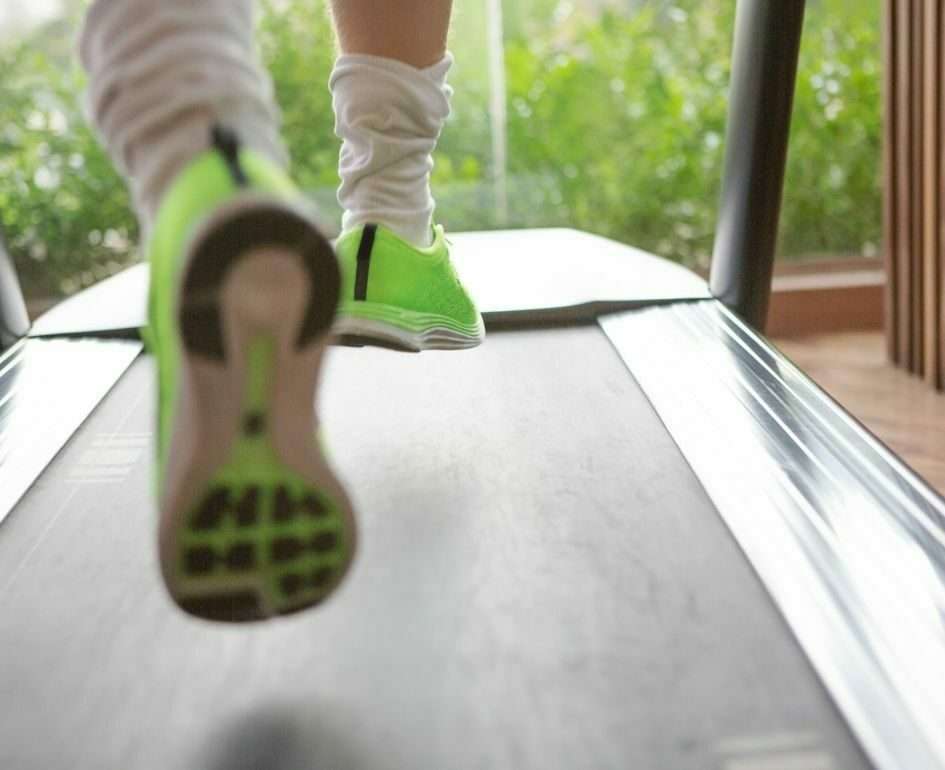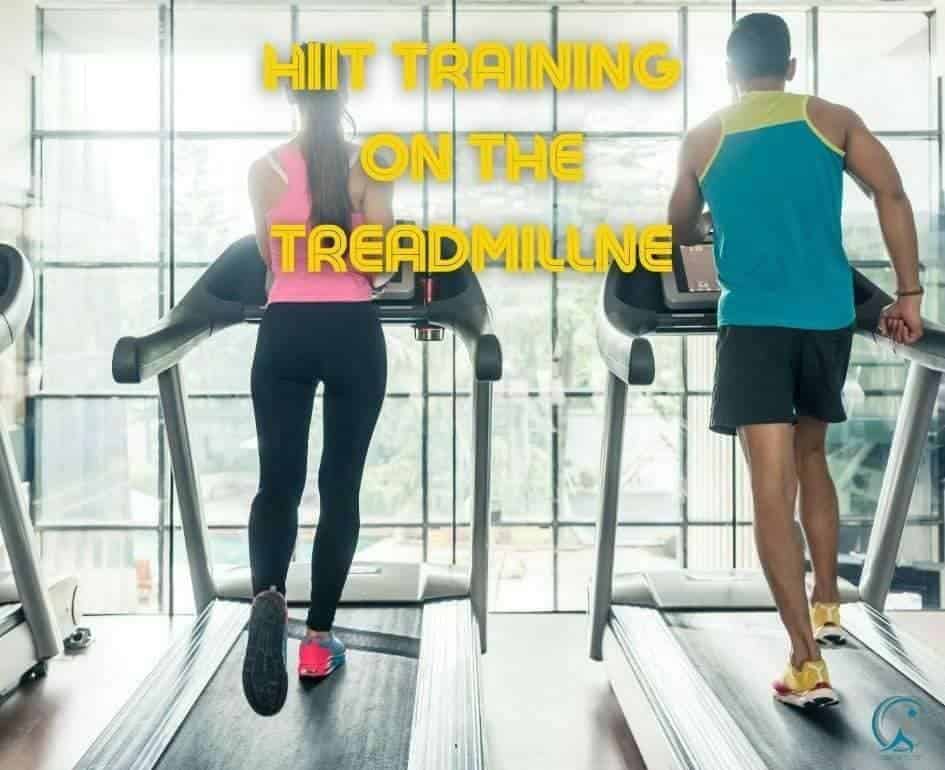Performing HIIT training on the treadmill has been one of the fashions in the fitness field in recent years. HIIT is challenging but works well; you can see the results quickly. Treadmills are currently one of the best pieces of fitness equipment for doing HIIT. But before focusing on the specific theme of HIIT in treadmills, let’s review the basics of this type of training.
Key Takeaways
- HIIT training on the treadmill maximizes calorie burn and improves cardiovascular fitness.
- Alternating between high-intensity bursts and active recovery periods makes HIIT workouts on the treadmill time-efficient and effective.
- HIIT treadmill workouts increase metabolism and promote fat loss even after the workout.
- Varying speed, incline, and duration during HIIT training provides a challenging exercise experience.
- Proper warm-up and gradual intensity increase are crucial for preventing injuries.
Why does HIIT work? Type 2 fast-shrinking muscle fibers and the “afterburn” effect
In musculature it differs between two types of muscle fibers:
- Fibers S/Type 1: Slow-shrinking muscle fibers, hence the S, of slow English
- Fibers F/Type 2: Fast shrinkage muscle fibers; the F comes from The English fast
Due to the high load during HIIT training on the treadmill, type 2 rapid shrinkage muscle fibers (or F fibers) are mostly requested. These are perfected for anaerobic yields. For short, very intensive and dynamic efforts (e.g., sprints). Prolonged cardio training (in a balanced state) otherwise requests type 1 slow-shrinking muscle fibers. These are used for aerobic activities, such as the endurance race.
There are 2 primary reasons that fast muscle fibers need more energy. The first one is to provide high performance quickly, and the second is to recover after an intensive workout (better and faster). During an exercise, which primarily activates these muscle fibers, a higher number of calories are burned simultaneously. Besides, more calories will also be used after the session to “repair” these fibers. This is known as the afterburn effect or the post-exercise fat-burning effect.
How is the optimal intensity found during a HIIT workout on the treadmill?
To perform HIIT training on the treadmill optimally, you’ll need to experiment a little with your machine’s settings. To perfectly regulate your HIIT program on the treadmill, you can use both tilt and speed settings.
Determine your maximum performance!

First, you must find an adjustment you can not resist for more than a minute. This will be your high-intensity phase. At first, your maximum performance minute may only run at 9 km/h without inclination. But soon, you’ll see how these settings will surely go up. In nothing, you will be traveling at 12 km/h with a 3% inclination. The first advances are the ones that are noticed before. Don’t be discouraged if your progress doesn’t increase at the same rate after a while. You’ll know how you’ll keep moving forward. But it’s like this: the jump from 8 to 9 km/h is more accessible than the 12 to 13 km/h. The crucial point is that you find your 1-minute boundary. After that minute, you’ll have to be practically out of breath, and you’ll need to reduce some gears.
When that minute passes, you’ll therefore slow down. This will be your regeneration phase. This phase should last approximately 1-2 minutes. This also depends a lot on the level of your fitness. Adjust your “slow” stage so that you can give it your all again after up to two minutes.
Don’t forget the warm-up
During a 1-minute high-intensity exercise, a subsequent 1-2 minute recovery period makes up an interval. When you do your first HIIT workout on the treadmill, you’ll need to aim for 6-8 intervals. You will be able to increase this number over time. But you must be moderate: you should not prolong HIIT training on the treadmill too long. That’s one of the advantages of HIIT: sessions are brief but intense. Also, always remember to warm up before starting HIIT training itself on the treadmill. Running for 5-10 minutes will gradually warm you up, and you can even strain in half of the first intensive phase. However, it must still be below your limit. This will get your body up and running, and the muscles will receive the necessary blood supply.
This way, you’ll control your training in the best way
Many treadmills already have an option of “interval program,” or you can define it using the custom program. If you can, you’d better choose custom programs, as they can be adjusted in much more detail. The setting of a custom program lasts less than 5 minutes, and you will be able to access it repeatedly. If you don’t love programs, you can also use the hotkeys. Any running belt in conditions features hotkeys for speed and tilt. With the push of a key, you can, e.g., change the speed from 8 km/h to 12 km/h.
HIIT training plans on the treadmill (examples)
We have prepared two basic training plans here, with which you can start using this type of training. Of course, you’ll probably have to adjust these up or down, but they’re certainly a good starting point.
- Easy warm-up with a quick walk to smooth run for about 10 minutes
- Running: 12 to 13 km/h for 30 seconds to 1 minute
- Walking at 5.5 or 6 km/h for about 2 minutes
- Perform a total of 8 intervals
- If the intervals aren’t demanding enough for you, increase your inclination a little
- Brief cooling: 5 minutes of regular walking, and through the well-deserved water taquito
Here’s a training proposal, so when you’re already working with a slightly higher load. But it’s best if you’re trying out new training sessions.
- 5 minutes of warm-up with a brisk walk
- 1 minute run at 11 km/h, then 2 minutes at 8.5 km/h; repeat it 5 times
- 1-minute gentle walk to recover
- 30 seconds of running at 14 to 18 km/h, then 1-minute walk at 6 km/h; repeat it 5 times
- 4 minutes of smooth walking as cooling
How often weekly do I practice HIIT?
We recommend that you conduct 2 HIIT sessions a week on the treadmill. You can devote the rest of the training days, such as strength training or longer but less intense cardio sessions. Surprise your body every time! Don’t neglect to give your body a 48-hour regeneration phase after HIIT training on the treadmill. This is especially important for beginners.
Maximizing HIIT Effectiveness on the Treadmill
Engaging in HIIT (High-Intensity Interval Training) on the treadmill is a transformative approach to cardio workouts, offering dynamic changes in speed and intensity to maximize fat-burning and enhance cardiovascular health. The treadmill provides a controlled environment where the intensity of the workout can be precisely managed, allowing for optimized intervals of high-speed sprints and low-intensity recovery periods, ensuring a workout that is both challenging and manageable.
Crafting a Balanced HIIT Treadmill Workout
A well-structured HIIT treadmill workout involves careful planning to balance intensity and recovery. It’s essential to tailor the workout to individual fitness levels, ensuring that the high-intensity intervals are challenging yet sustainable. Incorporating variations in speed and incline during the workout can also enhance its effectiveness, promoting muscle engagement and cardiovascular improvement without causing undue stress or risk of injury.
Enhancing Workout Results with Proper Techniques
Proper form and technique are crucial when performing HIIT on the treadmill. Ensuring that the body is well-aligned, and movements are controlled and deliberate enhances the effectiveness of the workout while minimizing the risk of injury. It’s also vital to maintain a focused and consistent approach throughout the workout, keeping track of intervals and ensuring that each high-intensity phase is performed with maximum effort and focus.
Recovery and Consistency in HIIT Treadmill Training
Recovery is a key component of HIIT treadmill training. Allowing the body adequate time to rest and recover between high-intensity intervals and ensuring that there are sufficient rest days between workouts is essential for long-term success and improvement. Consistency in training, coupled with proper recovery strategies, ensures that the benefits of HIIT, such as improved cardiovascular health and increased metabolic rate, are fully realized.
Unlocking the Full Potential of Treadmill HIIT
HIIT on the treadmill offers a powerful tool for achieving fitness goals, promoting enhanced cardiovascular health, and efficient calorie burning. By carefully structuring workouts, maintaining proper form and technique, and ensuring adequate recovery, individuals can unlock the full potential of HIIT treadmill training, achieving significant fitness improvements in a time-efficient manner.
FAQs
What is HIIT training on the treadmill? HIIT (High-Intensity Interval Training) on the treadmill involves alternating between intense bursts of exercise and short recovery periods. It’s a highly effective way to burn calories and improve cardiovascular fitness.
What are the benefits of HIIT training on the treadmill? HIIT training on the treadmill offers several benefits, including increased calorie burn, improved endurance, enhanced cardiovascular health, and time efficiency.
How long should a HIIT workout on the treadmill be? A typical HIIT workout on the treadmill lasts around 20-30 minutes, including warm-up and cool-down periods. The actual high-intensity intervals usually range from 10 to 60 seconds.
Can beginners do HIIT training on the treadmill? Yes, beginners can do HIIT training on the treadmill. It’s important to start at a comfortable pace and gradually increase intensity and duration as fitness levels improve. Consulting with a fitness professional is recommended.
Are there any precautions to consider for HIIT training on the treadmill? Before starting HIIT training on the treadmill, it’s advisable to consult with a healthcare professional, especially if you have any pre-existing medical conditions or concerns. It’s also important to warm up properly and listen to your body during the workout.
Conclusion
If you want to achieve quick results and get in shape, HIIT training on the treadmill is an excellent option. HIIT is a demanding but highly effective exercise that primarily activates type 2 fast-shrinking muscle fibers and produces the afterburn effect, which burns calories even after the workout.
To optimize your HIIT program on the treadmill, experiment with speed and incline settings until you find the maximum performance you can maintain for a minute, followed by a regeneration phase lasting approximately 1-2 minutes.
Always warm up before starting your HIIT workout, and aim for 6-8 intervals to start. If you’re looking for training plans, we’ve included two examples to get you started, but you can adjust them based on your fitness level. With proper adjustments and consistency, HIIT training on the treadmill can help you achieve significant progress toward your fitness goals quickly.
References
Effects of High-Intensity Interval Training After Stroke (The HIIT Stroke Study) on Physical and Cognitive Function: A Multicenter Randomized Controlled Trial
- Published on: June 6, 2021
- Summary: This study assesses the effects of high-intensity interval training (HIIT) on physical, mental, and cognitive functioning after a stroke. The research indicates that HIIT can be a beneficial approach in the recovery process, improving various aspects of health and functionality.
Effects of high-intensity interval training compared to moderate-intensity continuous training on maximal oxygen consumption and blood pressure in healthy men: A randomized controlled trial
- Published on: September 1, 2019
- Summary: This research compares the effects of HIIT and moderate-intensity continuous training on maximal oxygen consumption and blood pressure in healthy men. The findings suggest that HIIT might be more effective in improving cardiorespiratory fitness and other health-related factors.
As a veteran fitness technology innovator and the founder of GearUpToFit.com, Alex Papaioannou stands at the intersection of health science and artificial intelligence. With over a decade of specialized experience in digital wellness solutions, he’s transforming how people approach their fitness journey through data-driven methodologies.
